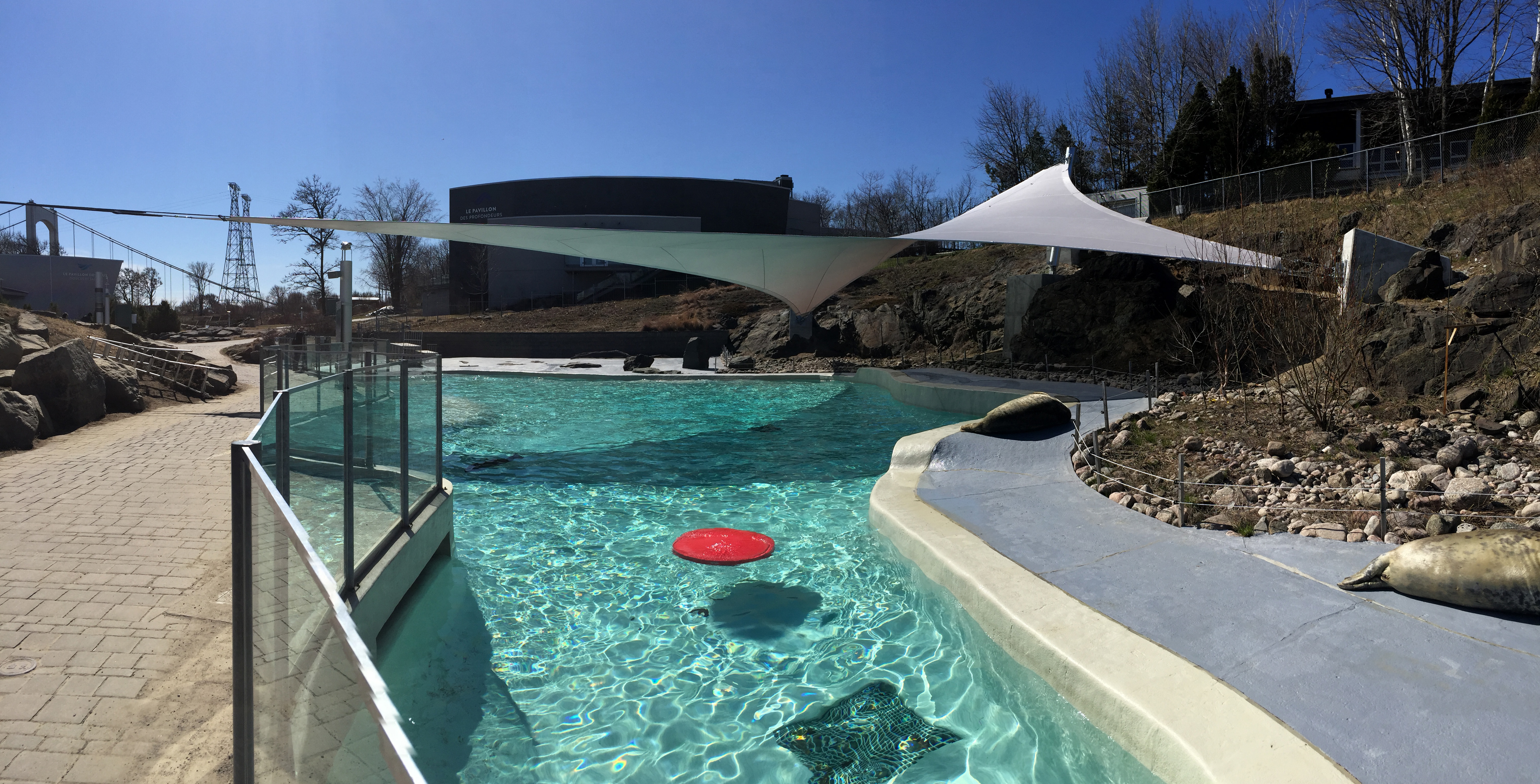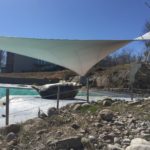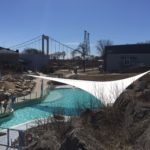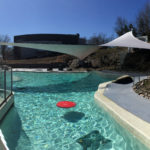Company:
Sollertia Inc. Montreal, QC
Project Details
Fabric 1
Stamisol FT371
Producer:
Serge Ferrari
Supplier:
Serge Ferrari North America Inc.
Engineer Name 1
Jean Massé
Engineer Company 1
Service d'ingénierie Jean Massé
Design Name
Nathalie Lortie (for double curvature shapes)
Design Company
Sollertia Inc.
Architect Name
Louis Caron
Architect Company
Coarchitecture
Fabrication Name
Bruno Hervy
Fabrication Company
VSO
Subcontractor Name
Jimmy Fortier
Subcontractor Company
Constructions BSL Inc.
Project Manager Name
Marie-Claude LeBlanc
Project Manager Company
Sollertia Inc.
Installation Name
Claude Le Bel
Installation Company
Sollertia Inc.
Please describe the project specifications
Tensioned inverted double-curvature shade sail with a total surface area of 24 square meters for the pool housing the harp seals at the Aquarium du Québec.
What was the purpose of this project? What did the client request?
The Société des établissements de plein air du Québec (French for "Society of outdoor recreation establishments of Quebec", also known as Sépaq) is the agency of the government of Quebec that manages parks, wildlife reserves, and certain historical sites and tourism facilities. The Sépaq requested a shade solution for the harp seals at the Aquarium du Québec, a public aquarium located in Quebec City. The shade sail that the Sépaq had in mind was large-scaled and they wanted a quality product delivered within a specified deadline. We worked on the technical design aspect of the project in collaboration with the architect and the engineer.
What is unique or complex about the project?
The double-curvature architectural membrane covers a sizeable area and is located directly above the basin housing the seals. The safety and well-being of the seals during the installation process was paramount. Since the harp seals could not be relocated during the process, we had to mindfully work around the half-dozen or so seals that called the basin their home.
The wind loads on the membrane were based on loads prescribed by the National Building Code of Canada and the tension and weight of the cables were significant. Because the membrane is to be dismantled seasonally we developed a solution using high performance synthetic rope on the periphery of the membranes which reduced the weight, simplified the fastening system and reduced the project costs.
What were the results of the project?
The client was satisfied with the design. The double curvature membrane allows for greater stability, a taut surface and a dynamic architectural form with high and low points that result in a more open space compared to a flat surface membrane that has the potential to sag.
Content is submitted by the participant. IFAI is not responsible for the content descriptions of the IAA award winners.



 TEXTILES.ORG
TEXTILES.ORG





